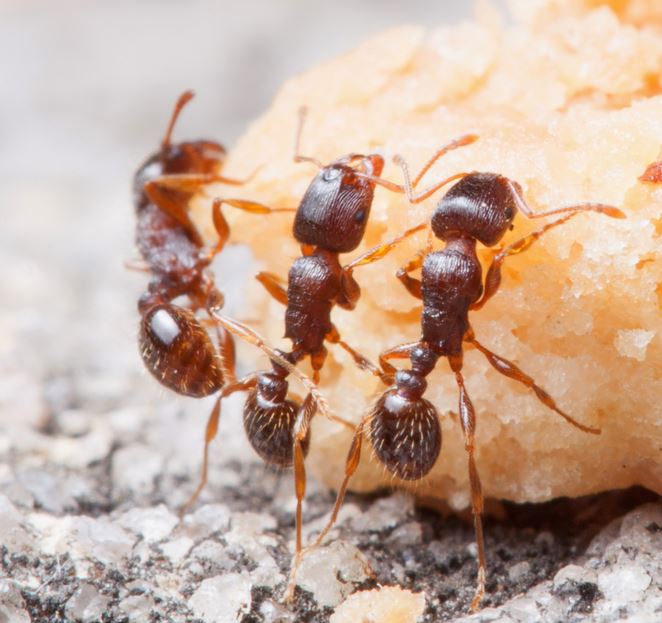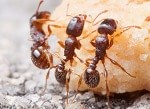Many types of ants (not all) love human fast foods, a study on various species in the streets of Manhattan found, which may help explain why some species are thriving in urban environments, researchers from North Carolina State University said.
The researchers carried out a study on isotope levels in Manhattan ants to determine what they had been eating.
Lead author, Dr. Clint Penick, a postdoctoral researcher at NC State, said:
“We wanted to learn more about why some ant species are able to live alongside us, on sidewalks or in buildings, while other species stay on the outskirts of human development. This could also help us determine which species are doing the most to clean up our trash.”

Pavement ants eating human junk food. Photo credit: (Lauren Nichols, YourWildlife.org)
The study findings have been published in the academic journal Proceedings of the Royal Society B (citation below). Co-authors included Dr. Amy Savage and Dr. Rob Dunn, both from NC State.
Dr. Penick and colleagues gathered over 100 ant samples, representing 21 different species from dozens of sites on sidewalks (British English: pavements), parks and street medians (strip of land between the carriageways of a major road) in Manhattan.
They then determined the isotope content of the insects’ bodies. Isotopes, which are also used for carbon dating, are variations of the same element and have differing numbers of neutrons.
All animals, including humans, incorporate the carbon in the food they eat into their bodies. One type – carbon-13 – is associated with grasses, such as sugar cane and corn.
Ants that eat a lot of human food have elevated levels on carbon-13, compared to ants that don’t. Corn and refined sugar are present in hamburgers (corn-fed beef) and most processed foods.
The pavement ant (Tetramorium caespitum) is the most common ant species on sidewalks and medians. It was also found to have the highest levels of carbon-13.
The scientists found that ant species found in medians had higher levels of carbon-13 compared to the ones that were collected from parks.
Dr. Penick said:
“Human foods clearly make up a significant portion of the diet in urban species. These are the ants eating our garbage, and this may explain why pavement ants are able to achieve such large populations in cities.”

Lasius cf. emarginatus is common in Manhattan sidewalks but avoids human junk food.
There is one species of ant – Lasius cf. emarginatus – which has only been found in New York City within the past 5 years, that appears to be an exception to the urban ant trend of eating human food.
L. emarginatus is thriving on Manhattan’s medians, but according to isotope analysis, it has no preference for human food, even though high numbers were found on the city’s sidewalks.
Lasius cf. emarginatus appears to spend half its time in subterranean nests, and the other half foraging in the branches of trees in the city.
Dr. Penick said:
“This highlights the complex nature of urban ecosystems and how much we still have to learn about how these species relate to each other and to the environment.”

Dr. Penick gathering samples in Manhattan. (Image: Lauren Nichols, YourWildlife.org)
The research was funded by the National Science Foundation and the Department of the Interior’s Southeast Climate Science Center.
In an Abstract in the journal, the authors wrote:
“Our results demonstrate that the degree urban ants exploit human resources changes across the city and among species, and this variation could play a key role in community structure and ecosystem processes where human and animal food webs intersect.”
Does this mean pavement ants are set to become obese? Although their urban diets may make one wonder, they do not spend most of their day watching TV – i.e. they don’t have a sedentary life. So, perhaps they may avoid the most serious health threat faced by humans today.
Citation: “Stable isotopes reveal links between human food inputs and urban ant diets,” Clint A. Penick, Amy M. Savage and Robert R. Dunn. Proceedings B. DOI: 10.1098/rspb.2014.2608. Published 1 April, 2015.

